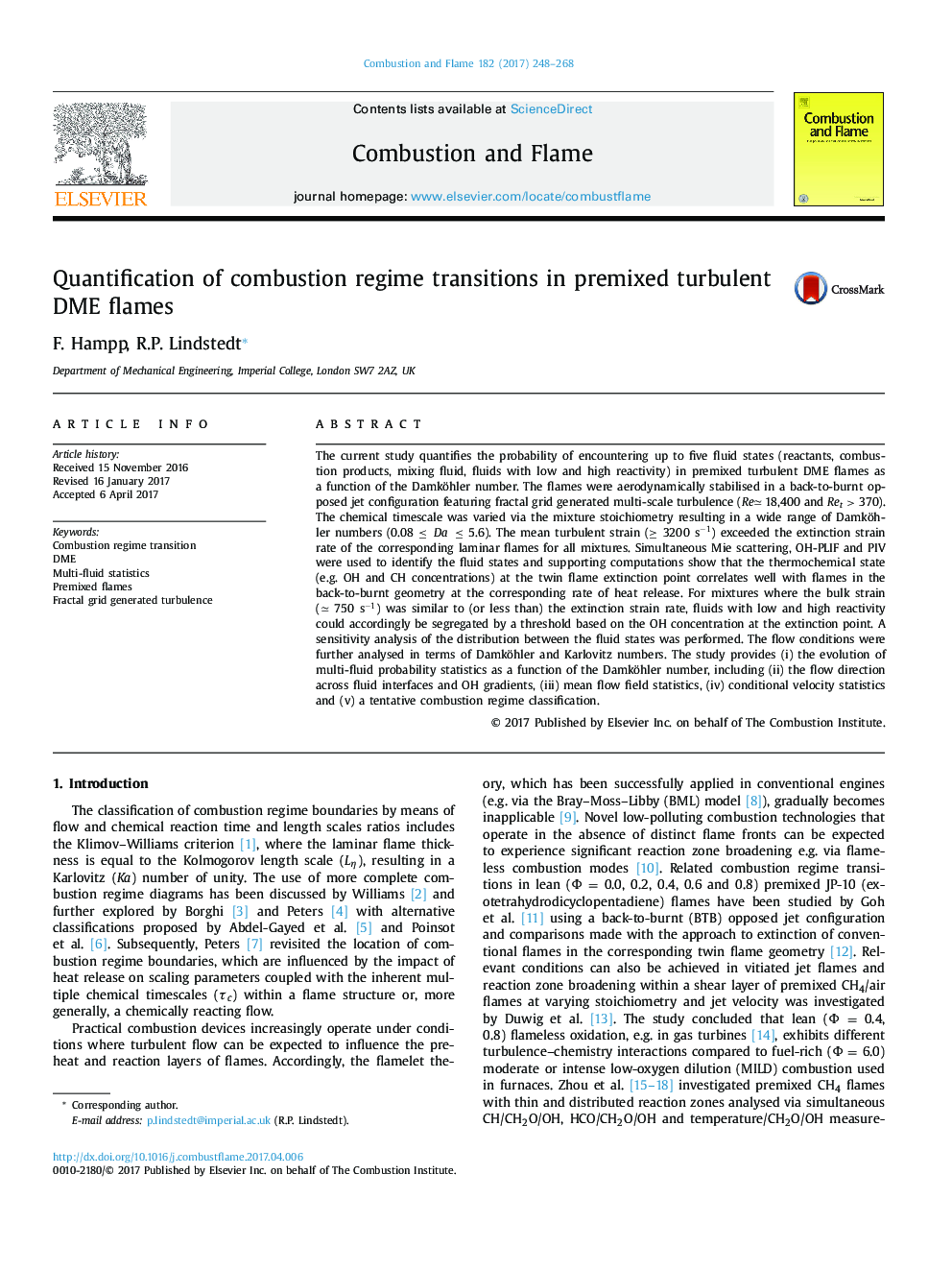| Article ID | Journal | Published Year | Pages | File Type |
|---|---|---|---|---|
| 4764428 | Combustion and Flame | 2017 | 21 Pages |
Abstract
The current study quantifies the probability of encountering up to five fluid states (reactants, combustion products, mixing fluid, fluids with low and high reactivity) in premixed turbulent DME flames as a function of the Damköhler number. The flames were aerodynamically stabilised in a back-to-burnt opposed jet configuration featuring fractal grid generated multi-scale turbulence (Reââ18,400 and Ret > 370). The chemical timescale was varied via the mixture stoichiometry resulting in a wide range of Damköhler numbers (0.08 ⤠âDaâ ⤠5.6). The mean turbulent strain (⥠3200 sâ1) exceeded the extinction strain rate of the corresponding laminar flames for all mixtures. Simultaneous Mie scattering, OH-PLIF and PIV were used to identify the fluid states and supporting computations show that the thermochemical state (e.g. OH and CH concentrations) at the twin flame extinction point correlates well with flames in the back-to-burnt geometry at the corresponding rate of heat release. For mixtures where the bulk strain (â 750 sâ1) was similar to (or less than) the extinction strain rate, fluids with low and high reactivity could accordingly be segregated by a threshold based on the OH concentration at the extinction point. A sensitivity analysis of the distribution between the fluid states was performed. The flow conditions were further analysed in terms of Damköhler and Karlovitz numbers. The study provides (i) the evolution of multi-fluid probability statistics as a function of the Damköhler number, including (ii) the flow direction across fluid interfaces and OH gradients, (iii) mean flow field statistics, (iv) conditional velocity statistics and (v) a tentative combustion regime classification.
Keywords
Related Topics
Physical Sciences and Engineering
Chemical Engineering
Chemical Engineering (General)
Authors
F. Hampp, R.P. Lindstedt,
